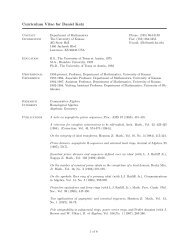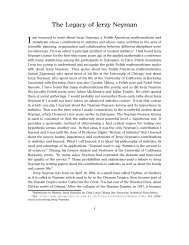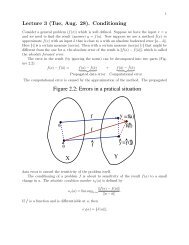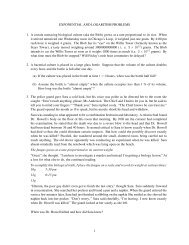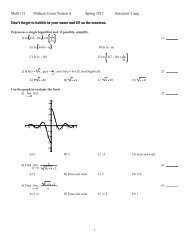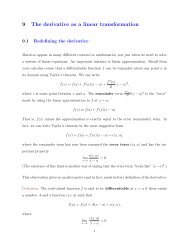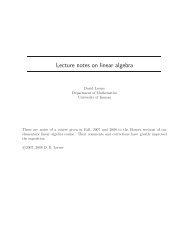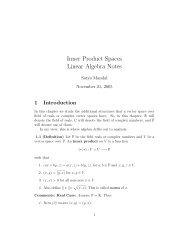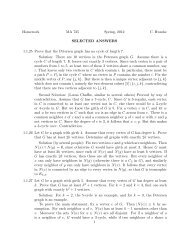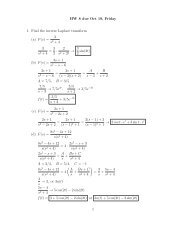Canonical Forms Linear Algebra Notes
Canonical Forms Linear Algebra Notes
Canonical Forms Linear Algebra Notes
You also want an ePaper? Increase the reach of your titles
YUMPU automatically turns print PDFs into web optimized ePapers that Google loves.
2.13 (Definition) Let V be a vector space over F and V1, V2 . . . , Vk<br />
be subspaces of V. We say that V is direct sum of V1, V2, . . . , Vk,<br />
if each element x ∈ V can be written uniquely as<br />
with ωi ∈ Vi.<br />
Equivalently, if<br />
x = ω1 + ω2 + · · · + ωk<br />
1. V = V1 + V2 + · · · + Vk, and<br />
2. ω1 + ω2 + · · · + ωk = 0 with ωi ∈ Vi implies that ωi = 0 for<br />
i = 1, . . . , k.<br />
If V is direct sum of V1, V2 . . . , Vk then we write<br />
V = V1 ⊕ V2 ⊕ · · · ⊕ Vk.<br />
Following is a proposition on direct sum decomposition.<br />
2.14 (Proposition) Let V be a vector space over F with dim(V ) =<br />
n < ∞. Let V1, V2 . . . , Vk be subspaces of V Then<br />
V = V1 ⊕ V2 ⊕ · · · ⊕ Vk<br />
if and only if V = V1 + V2 + · · · + Vk and<br />
dim(V ) = dim(V1) + dim(V2) + · · · + dim(Vk).<br />
Proof. (⇒): Obvious.<br />
(⇐): Let Ei = {eij : j = 1, . . . , di} be basis of Vi. Let E = {eij :<br />
j = 1, . . . , di; i = 1, . . . , k}. Since V = V1 + V2 + · · · + Vk, we have<br />
V = SpanE. Since dim(V ) = cardinlity(E), we have E forms a<br />
basis of V. Now it follows that if ω1 + · · · + ωk = 0 with ωi ∈ Wi then<br />
ωi = 0 ∀i. This completes the proof.<br />
Now we restate the final theorem 2.12 in terms of direct sum.<br />
8





